| Issue #97 • January/February, 2006 |
Firebuilding skills are essential for those who may find themselves in survival situations. As a testimony to this idea, Americans in the Gulf Coast States experienced a string of hurricanes late in 2005, two of which were devastating in their destructive force. Hurricanes Katrina and Rita left many homeless and without resources. Regardless of your thoughts on who should have responded and provided assistance to the victims of the hurricanes, these people found themselves in life-threatening situations. Should such destruction have occurred during the winter months due to avalanche, earthquake, or other disasters, we would need to immediately provide ourselves with heat and shelter.
When learning to build a fire, it helps to know something of a fire’s anatomy. A fire has working parts and components that work together to perform like any other engine. In the case of fire, we are building an engine that produces heat. Heat which our lives could depend on. The first component of a fire is the coal bed. The coal bed produces the greatest amount of heat and creates an updraft of dry hot air, which is the second component of our fire. The updraft interacts with the third component of a working fire: the fuel. The fuel may be wood, paper, coal, dried buffalo chips, or anything that burns. The updraft of dry, hot air created by the coal bed flows around the fuel. This dries out and heats up the fuel to the point that the fuel releases gasses that are ignited by the heat. The fuel begins to burn down to its basic chemical composition. As it does this, it releases heat, and the gasses it releases become incandescent. We see this as flames, our fourth component. Soon the chemical composition of the fuel left in the greatest amount is carbon. At this point, the fuel has become coal and has joined the coal bed, replacing those that have lost even their carbon and burned to ash. This completes the cycle of a fire.
By understanding the anatomy of a fire, you can see that building a coal bed is the surest way to guarantee success and maybe save your life. There are some fundamental techniques you must master to turn a spark into a coal bed and a warm fire.
|
First is in preparation of your fire area. More commonly known as a fire ring, this entails clearing an area of debris so that sparks cannot ignite anything and cause an out-of-control fire. Within the cleared area, place stones in a ring to contain coals and fuel. Keep in mind that you should build your shelter close to your fire, so choose the area wisely and keep the fire to a manageable size.
A fire begins as a spark. You will need something to create that spark. Most people are primarily familiar with matches as a means to accomplish that. Matches can start a fire quickly and easily under good weather conditions, but they must be sheltered and kept away from wind and rain. Matches must also have a reliable striking surface. Strike- anywhere matches can produce a spark by striking against a piece of sandstone found anywhere, but other matches must have a surface coated with potassium chlorate to produce spark and flame. When packing matches for your fire starting kit, always pack strike-anywhere matches in a weatherproof container.
When matches are wet or used under very windy conditions, they will not work reliably. Since you may need to build a fire under the worst of conditions, it is prudent to learn other methods of striking a spark. I am never without a modern version of the old flint and steel fire starters. Most of these starters make use of modern composite flints, which provide a better spark than natural flints. They also make use of magnesium, which burns extremely hot when ignited and will catch tinder and kindling even when wet. The flint and magnesium themselves could be drenched and the water would not interfere with the flint’s ability to produce spark nor the magnesium to ignite. This is because magnesium produces its own oxygen as it burns and will burn effectively even under water.
The most common magnesium/flint fire starter on the market utilizes a block of magnesium, a small flint rod, and a key chain. These fire starters cost in the $6 range. They fit in the pocket or pack quite easily. My personal fire starter utilizes a medium diameter magnesium rod, a larger composite flint rod capable of starting more fires, a handle made of deer antler that allows the user to place the flint onto the tinder while striking a spark in an ideal position and a steel striking blade that saves the blade of your knife. These cost in the $20 range. I am in the woods so often that I consider the extra advantages worth the extra bucks.
I consider the flint and magnesium fire starters more reliable than matches as they start a fire even in wet, windy conditions. There is a common misconception regarding how the flint and steel method works, which hinders many from creating a spark. The term “striking a spark” is a bit deceptive. This causes many to strike the flint with the steel in a chipping motion, which is inefficient. The correct method is to firmly rub the steel down the surface of the flint. Start with the steel at the top of the flint either toward the fire starter’s handle or your hand, depending on your fire starter’s design, and firmly rub the steel downward toward the tinder. This will create a shower of sparks that will land on the tinder. Place the bottom end of the flint on top of the tinder before this procedure, and you will be guaranteed that the tinder will catch a good spark.
|
A fuel lighter should also be carried, especially by the novice. The low-cost fuel lighters sold in grocery stores have been made safe to carry in the pack or pocket by the addition of a safety lever that must be pressed down upon “flicking” the lighter wheel to maintain the butane fuel supply to the flame. These lighters are convenient because a flame can be steadily supplied, which is more likely to dry out and ignite wet tinder and kindling. A candle stub, when sheltered from the wind and rain, will also supply a constant flame to wet tinder and kindling, but you will still need something to create a spark to light the candle.
First, place tinder in the middle of the fire ring. (Tinder is anything flammable that will catch and hold a spark.) The best tinder material is paper towels, toilet paper, newspaper, tissue paper, cotton balls soaked in petroleum jelly, char cloth, and used gun cleaning patches. Tinder material found in nature is cedar, birch and a few other tree barks, cattail pollen, goatsbeard and dandelion seed cotton, bird’s nests, the pith of plants like elderberry, and dry punky wood. Of the natural materials, cedar bark works best for me, since it can be pounded with a stone to separate its fibers. The fibers are then wadded together loosely to catch a spark. When the cedar bark is ignited, it catches kindling very reliably. Should you run low on tinder in the wild, look for the above sources even while you have a fire blazing. If they are wet, keep them close to your fire to dry them out.
Next, place kindling on top of your tinder. (Kindling is fuel of a small diameter that will combust easily.) It is generally any dry twig that you can gather, but not all wood is good for kindling. Cedar catches more readily than any other kindling, but it does not make great coals. Coals or embers are necessary to keep the fire going and to produce heat. Maple, Douglas fir, tamarak, and hardwoods are great for making coals. Place the cedar on the tinder in order to catch a quick, hot fire, and place the other woods on the cedar to create a quickly forming coal bed. You cannot carry much kindling with you due to bulk and weight, but it would be helpful to carry a small amount to ensure that you have some dry kindling to start a fire on a wet day.
Many people place the kindling around the tinder in a teepee fashion. I like to place the kindling on the tinder in a cross-hatch fashion. I can place the cedar closer to the tinder, then better coal-forming woods on top of the cedar. This also seems to support the starter logs more readily.
Starter logs are merely thinner versions of firewood or logs. They are much thicker than kindling, but thinner than the larger, longer-burning logs you will gather. These are faster burning, but will quickly add to the coal bed of your fire. Place the starter logs on top of your kindling before starting the fire. Because the starter logs are thinner, they dry faster and are more readily combustible, ensuring that soon you will have a roaring fire. When the fire is burning well, add the thicker firewood.
The need for a fire is most pressing under less than ideal conditions. Whatever emergency has you outside your home or turned around in the woods, most likely has brought rain, snow, and wind with it. You can survive by building a fire if you keep your head and use the following techniques:
1. Rain or snow is blowing onto your fire area: Build a reflector half way around your fire ring in the direction the wind is blowing to protect from wind and rain or snow.
|
2. The firewood is soaked or caked in ice: Use a hatchet to chop away the outer wood and use the drier inner wood. Use more tinder to dry out and ignite wet kindling. Scrape magnesium from your fire starter onto the tinder before lighting. Magnesium burns at 5,400 degrees and will dry the kindling quicker.
3. Your fire keeps sputtering out because of wet conditions: You need to “feed the fire.” You must build up a coal bed under the wet starter logs by continually adding dry or semi-dry kindling until your starter logs have dried out and ignited. Collect wood from the upper boughs of dead trees, which will be drier. Carry some dry kindling with you to help catch wetter kindling.
4. Always carry a fire starting kit on your person. When you are hunting or camping do not leave this kit in camp. Always have it with you. The kit should include strike-anywhere matches in a weatherproof case, a magnesium/flint and steel fire starter, tinder (cedar bark, paper, used gun cleaning patches, petroleum jelly soaked cotton balls) in a weatherproof case, some dry kindling, a candle stub, a lighter, and a hatchet.
5. Carry a simple shelter-making kit that includes a military surplus weatherproof poncho in very good to excellent condition, a metalized emergency “space blanket,” twine, string, or clothesline, and a knife. This is all that’s necessary to build an emergency shelter. I’ve done so with less.
Last, but nowhere near least, is what is between your ears. Having the knowledge to build a fire under adverse conditions only gets you part way home. Now that you know the techniques to build a fire, you’ll need to practice. Most people have accomplished building a fire while camping under ideal conditions. For practice under more severe conditions, try lighting a fire in your backyard the next time it rains or snows. Leave some firewood and kindling out in the weather and see what you can do with it. Survival isn’t a game. It’s a matter of life and death.


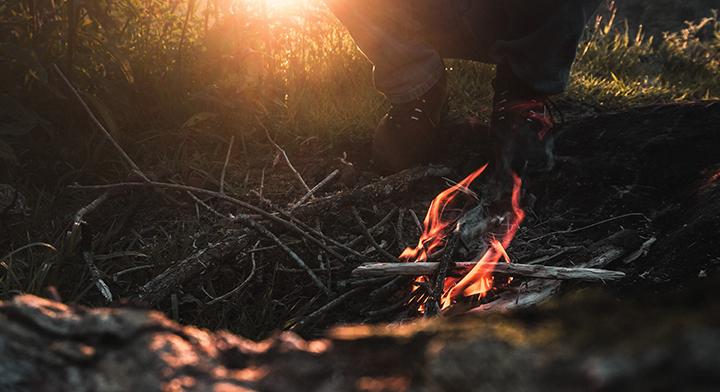



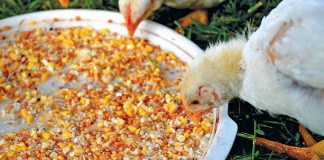





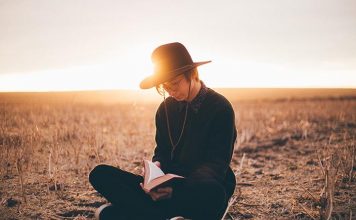
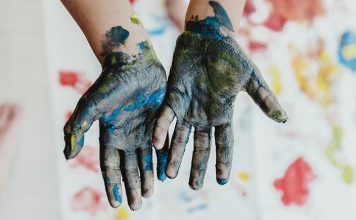
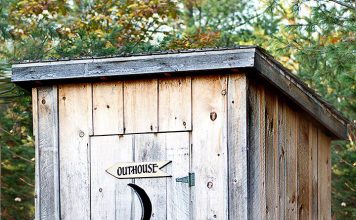
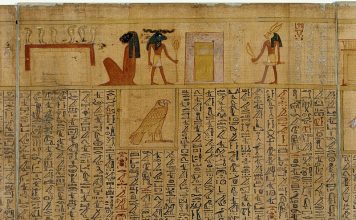
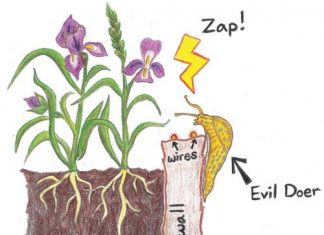
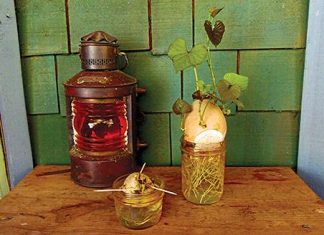
Odds are good that you will not find me in hose and heels if TSHTF. A pair of warm dry work boots (extra laces, boot grease) are a necessity. I keep extra wool sox in the truck along with rain gear. I cannot say that I am a prepper, but the way we live, many of these things just sort of part of our everyday activities.
Like you, after living in rural Montana–where “the mountains are high and the emperor far away”–we realized that we had to be self-reliant. (Yes, I recall snow on the 4th of July, but also some awesome sunny years when we stacked melons in mounds on our lawn and told friends to help themselves. We used a lot of remay and crop tunnels. “Fast food” was still moving.) Our insurance policy was our neighbors and we helped each other. Do not underestimate the importance of surrounding yourself with good and skilled people.
We did not consider ourselves preppers. It was just a way of life.
We also live according to the seasons. You cannot provide for all of your needs at once in a crisis, in the middle of winter when your cupboards are empty. You must replenish each item seasonally, saving seed for the next planting, etc..
There are certain things I always carry in the pockets of my chore coats. A pocket knife, a leatherman, a bandana handkerchief, work gloves, a whistle that contains matches, a small flashlight. My tree stand (tree house) has a roof to keep it dry and contains a tarp, cordage, 2 rustic homemade stools and a small flashlight. (There are cracks in the floor that let cold air in, but in an emergency, I could cover the floor and chink up open areas on the sides with boughs to provide shelter from wind and rain, if not heat. Body heat from several people in a small space.) I carry a few more items in our work truck, inc. first aid, a small saucepan, fish hooks, dental floss, cordage, water jugs and thermos. An ax or hatchet. And more. Not sure where we misplaced our pocket chain saw. When you travel backroads, it is also good to carry a big chainsaw in case roads are blocked by downed trees.
Building a cabin with our own wood and many salvaged materials is also in our plans. It is quite feasible for people who have access to land to build a small sturdy treehouse structure in the woods for summer sleep outs or mild climates. (Nice to get off the damp ground and avoid at least some mosquitos and critters, too.) Take all precautions for fire danger, though! Esp. good if you have spring water nearby.
Having said all of that, I do not like camping and very much prefer my soft bed and warm showers.